#manuscript marginalia
Text
For #WorldLionDay please enjoy this fabulous medieval manuscript goth lion:

Bibliotheque Saint-Genevieve MS 1029 (France, 14th c.), f. 127v detail
#Bibliotheque Saint-Genevieve#illuminated manuscript#medieval manuscript#manuscript#manuscript marginalia#book art#illustration#French art#European art#medieval art#lion#feline#World Lion Day#animal holiday#animals in art#black animals
476 notes
·
View notes
Text

Everyone liked the color charts I test printed for Basilisk so much, I felt compelled made a nice version! Great for anyone that has an interest in Risograph printing, historical pigments, or weird medieval marginalia.
(buy it here)
#Basilisk is in the process of restocking FYI for anyone that wants both :)#risograph#color chart#medieval#marginalia#medieval manuscripts#medieval art#illuminated manuscript#printmaking#monsters
13K notes
·
View notes
Text
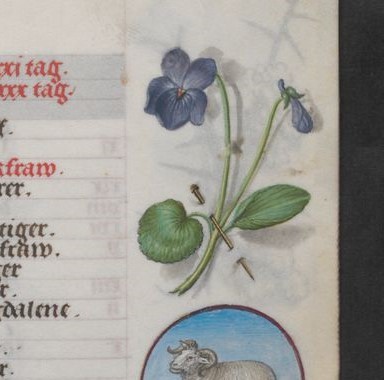
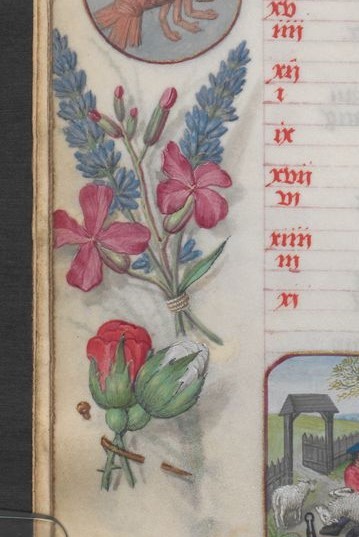

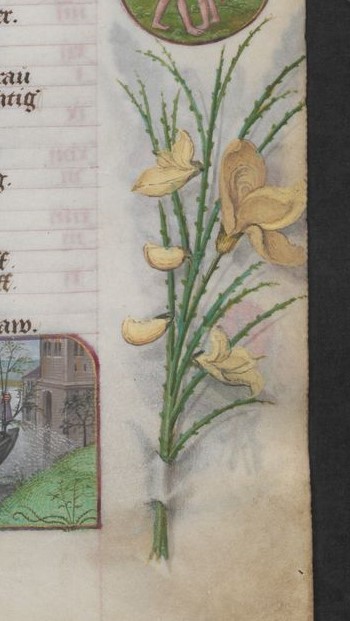
drawings of flowers and cherries at the margins of a manuscript made to look like real material objects affixed to the page
in a book of hours, flanders, ca. 1520
source: Vienna, Österr. Nationalbibl., Cod. 2730, f. 7r-9r.
#i'm in love with these btw#marginalia#illuminated manuscript#illumination#renaissance#flowers#plants#16th century#book of hours#manuscript
3K notes
·
View notes
Text




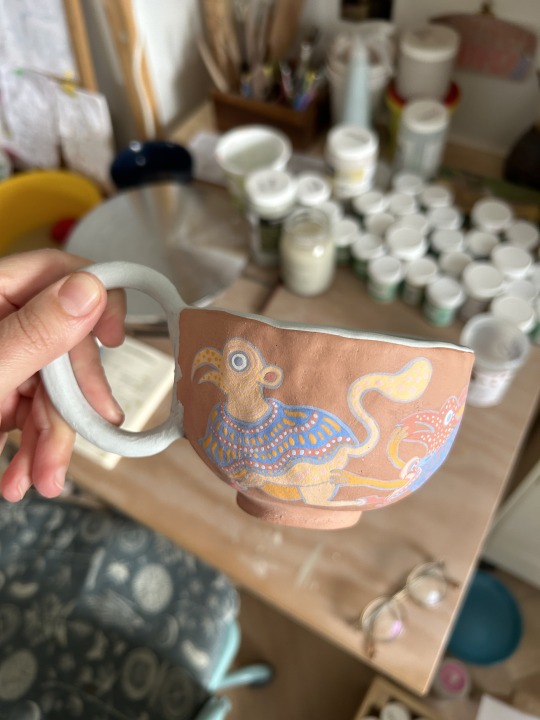
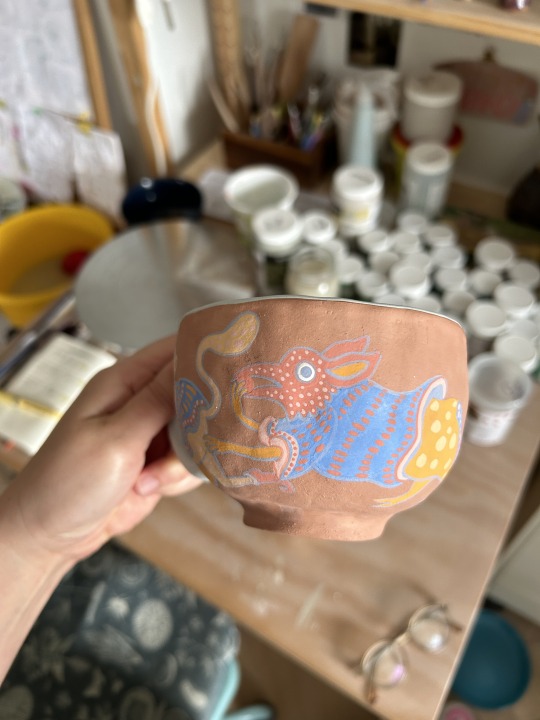

I'm back from my trip and almost ready to fire my first proper glazed batch (on Sunday because we have to get groceries tomorrow & I don't feel comfortable leaving the house while the kiln is running). Very exciting!!
These illuminated manuscript/marginalia-inspired vessels may have taken approx. 500yrs to underglaze, BUT also bring me a ton of joy so the hours of hunching over them with teeny brushes feels worthwhile!
#artblog#pottery#ceramics#handbuiltceramics#ceramicart#handbuilding#clay#stoneware#pinch pot#pinchpot#medieval#middle ages#medieval marginalia#illuminated manuscript
761 notes
·
View notes
Text


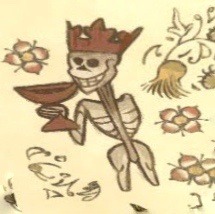
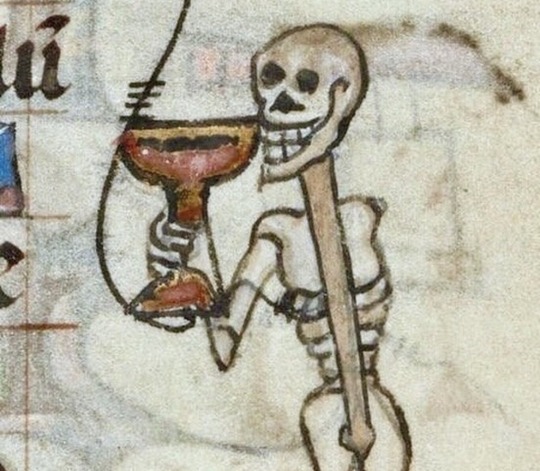
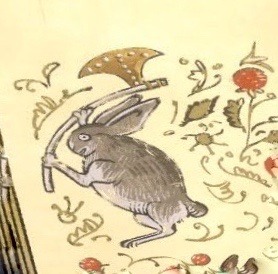
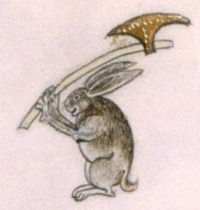
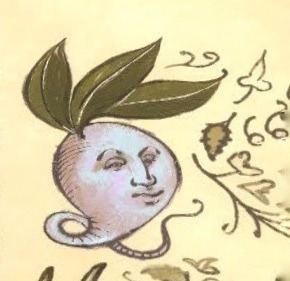



𝕻𝖊𝖓𝖙𝖎𝖒𝖊𝖓𝖙 𝖛𝖘 𝕽𝖊𝖆𝖑 𝖒𝖆𝖓𝖚𝖘𝖈𝖗𝖎𝖕𝖙𝖘
#pentiment#weird medieval guys#medieval manuscripts#illuminated manuscript#marginalia#medieval manuscript#500#1000#1500#2000#2500#3000
3K notes
·
View notes
Text



Godzilla working as a blacksmith was a common theme in medieval manuscript marginalia.
172 notes
·
View notes
Text
Monkey in a monk's robe I know, I know, it's serious.
A nattily-dressed simian lurks in the bottom margin of f. 187v, Ms. Codex 724, a 13th century Bible #drollerydonnerstag
🔗:
#medieval#manuscript#medieval manuscript#illuminated manuscript#illumination#illustration#drollery#marginalia#monkey#animal#book history#rare books#13th century#france
201 notes
·
View notes
Text
Weird Medieval Marginalia
So I got to see an epically cool manuscript of Arthurian romance (Beinecke MS 229), written in French sometime in the thirteenth or fourteenth century. It contains many fully illuminated illustrations, but the most interesting thing about it turned out to be the marginalia.
All the big images were the same kinds of scenes of knights fighting, people going into or out of buildings, people lying in bed, occasionally people on boats or talking, etc. After a while they just felt repetitive. But there are these little cartoons in the margins, and they are WILD:

I mean I don’t even know what’s going on here.

Apparently knights fighting snails appear in a lot of manuscripts. We have no idea what they mean. Might be the medieval version of a meme.
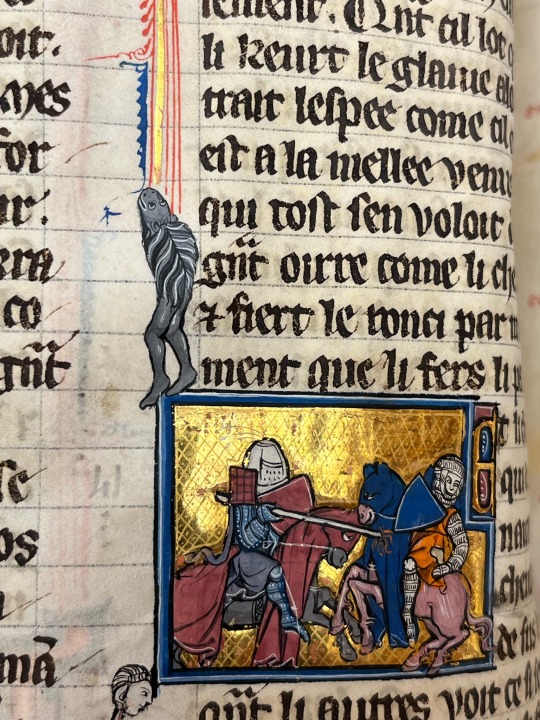
What even is that gray thing?

Knight riding chicken.

Derpy horse.

A very weird-looking unicorn.

Rabbits hunting people. (RUN AWAY!!! RUN AWAY!!!)

Balancing act.

Baby Yoda in the corner there.
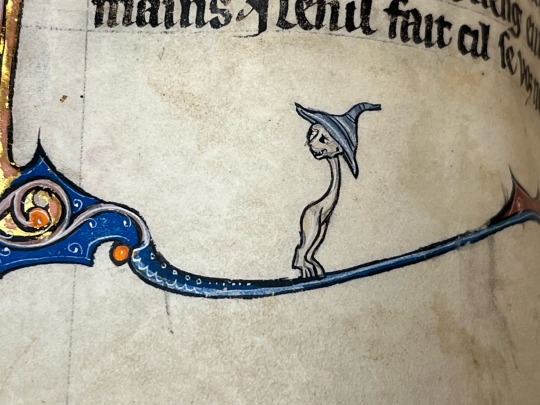
WHAT
There’s plenty more, but that’s as much as I can fit into one post. And this is all one manuscript!
#medieval#medieval art#manuscript#manuscripts#illuminated manuscript#arthurian legend#arthuriana#marginalia#weird shit#knights
128 notes
·
View notes
Text
Guda: a medieval self-portrait
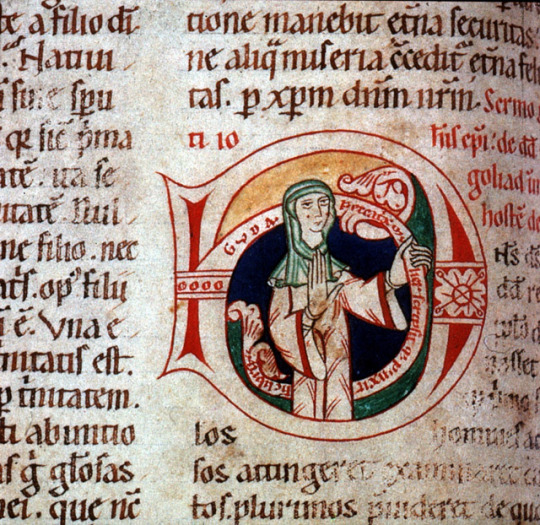
Self-portrait of Guda, homilary, Frankfurt, second half of 12th century.
"The first category of figures we have considered shows the artist present in the work or in the process of creating it. To that category, we add a second type of portrait or self-portrait, in which the artist beseeches a favorable judgment for him-/herself after the work is completed.
Such is the case with the famous signed self-portrait of Guda, who represents herself within a collection of homilies in an initial D[ominus] for the octave of the Pentecost. The inscription reads: “guda peccatrix mulier scripsit q[ue] pinxit h[un]c librum (Guda, a sinful woman, wrote and painted this book).” Of the seven initials in the manuscript, this D is one of only two that contain figures. The other historiated initial comes at folio 196, the opening of the Assumptio Mariae, and contains a portrait of the virgin identified as Maria Virgo. The other five initials display dragons, interlaces, ribbons, or spirals.
Guda represented herself firmly grasping the initial with her left hand and raising her right in a gesture of salutation and expectation. I would argue that Guda carefully and consciously chose to be here. The initial opens the ninth homily of St. John chrysostom, the Sermo beati iohannes episcopi de david ubi goliad immanem hostem devicit (Sermon of the blessed Bishop John, on when David overcame the monstrous enemy Goliath), which explains the election of David. The homily also offers an occasion to meditate on the gifts of the Holy Spirit and its role in comforting the soul. In short, Guda has chosen the perfect spot in which to await the Second Coming of Christ, and this is why she represents herself as a sinner, whose activity as an artist should count in her favor at the end of time.
Guda’s self-representation in this way is analogous to the scene the scribe Swicher has staged (for the reader?) in the frontispiece of his copy of isidore of Seville’s Etymologies. Swicher’s author portrait is most original. In the upper register, Isidore of Seville is depicted in conversation with Bishop Braulio of Zaragoza, the patron of the Etymologies. In the lower register, Christ in propria persona presides at the scribe’s last judgment. Two angels busy themselves at a balance in which is weighed the very manuscript Swicher copied. The work of the scribe counts as a work of virtue: a third angel takes Swicher’s soul away through a thick cloud, whereas the devil turns around empty-handed. The Titulus attests to this: "O god, deign to have mercy on this wretched scribe. Do not consider the weight of my faults. Small though the good things may be, let them be exalted over the bad. Let night give way to light; let death itself give ground to life.”
Guda and Swicher make use of the same patterns of visibility and those patterns are not gender-specific. In both cases, the artists stage their humility and represent their belief that they might reach the heavenly kingdom through the artistic work they have done."
Mariaux Pierre Alain, "Women in the making: early medieval Signatures and artists’ portraits (9th–12th c.)", in: Reassessing the Roles of Women as 'makers' of Medieval Art and Architecture
#history#women in history#women's history#12th century#germany#german history#middle ages#medieval history#medieval women#women's history month#women painters#female artists#educational#herstory#illuminations#marginalias#manuscripts#medievalism#guda
87 notes
·
View notes
Text
silly little medieval guy poll!!



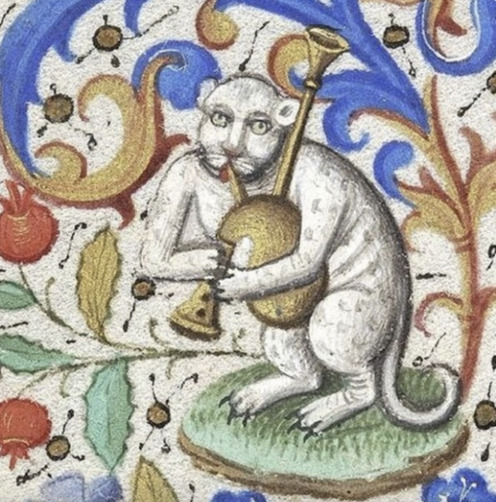


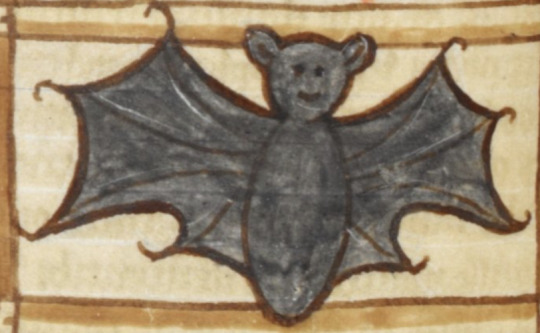



#medieval art#medieval manuscripts#marginalia#drolleries#art#art history#art history memes#art history poll#medieval poll#medieval art poll
54 notes
·
View notes
Text
tfw you're really down with a post until it starts insisting that both a) job-related malaise and frustration and b) scribal labor in monastic contexts are and were specific to young adults and not just a general condition of a) having a job, even one you mostly like and b) being a medieval monk, not a profession that had a corporate ladder
#like i know this is the logan's run website but still#why would you assume medieval scribes were all or primarily young people?#i guess once you turn 30 you lose your humanity and become a corporate drone or sth#anyway it seems like in most monastic communities everyone had multiple jobs#and few if any monks would ONLY do scribal work#although probably you would do more if you were good at it#ALSO funny marginalia like all illustration in medieval books were carefully planned#there are things in manuscript books that can be read as scribal expressions of frustration#but illustrations are always deliberate even if they're subversive
36 notes
·
View notes
Text
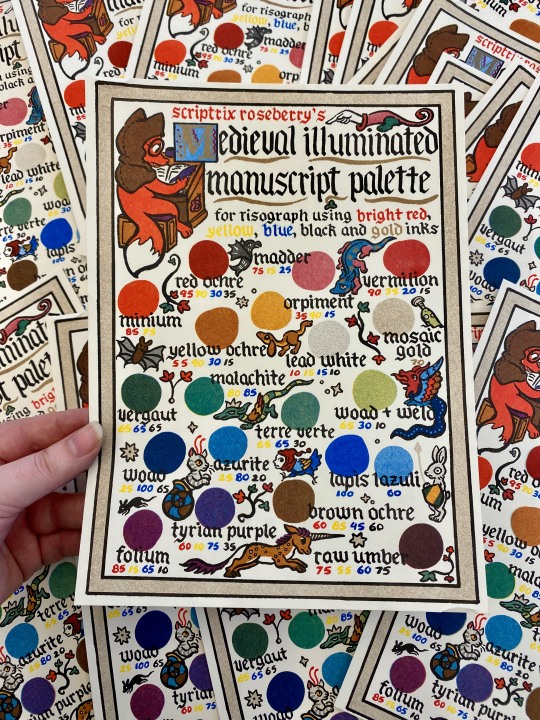
My Medieval Illuminated Manuscript Palette Risograph Color Chart Print is now back in stock!
#I printed like 300 of these take them out of my home#artists in tumblr#my artwork#risograph#color chart#medieval#marginalia#medieval manuscripts#medieval art#illuminated manuscript#printmaking#monsters
303 notes
·
View notes
Text


reynard the fox as a clergyman, with birds in his cowl
in the book of hours of mary of burgundy, flanders, ca. 1470
source: Vienna, ÖBN, Cod. 1857, fol. 59v
#15th century#book of hours#mary of burgundy#illuminated manuscript#marginalia#medieval art#medieval marginalia#medieval manuscript#birds#sorry for the misinformation it's not a kangaroo
2K notes
·
View notes
Text


A tiny face judging you in the margins of the "Bréviaire à l'usage de l'abbaye Saint-Faron de Meaux", a French breviary from the 14th century
Source:
Plateforme Ouverte du Patrimoine (pop.culture.gouv.fr)
book : Meaux - BM - ms. 0004
113 notes
·
View notes
Text

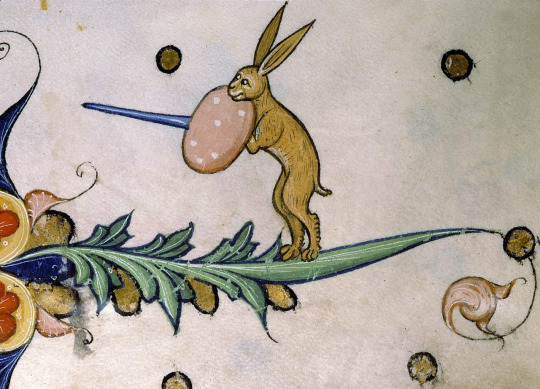


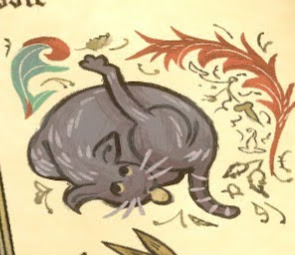
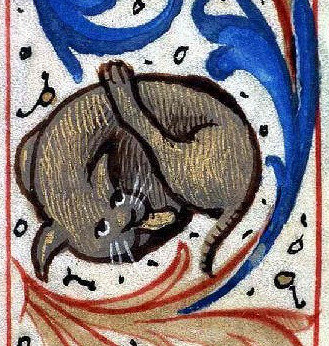


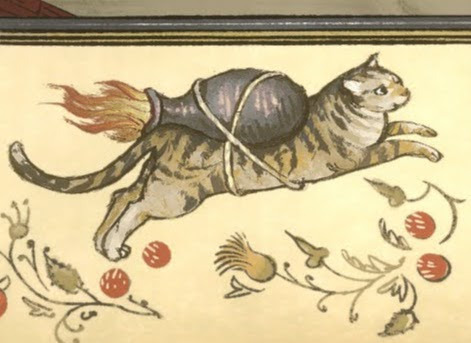

(𝖒𝖔𝖗𝖊) 𝕻𝖊𝖓𝖙𝖎𝖒𝖊𝖓𝖙 𝖛𝖘 𝕽𝖊𝖆𝖑 𝕸𝖆𝖓𝖚𝖘𝖈𝖗𝖎𝖕𝖙𝖘
#pentiment#marginalia#medieval manuscripts#medieval manuscript#illuminated manuscript#weird medieval guys#500
1K notes
·
View notes
Text



Many monks added records of when Godzilla stayed at their monastery and took the vows in the margins of their manuscripts.
126 notes
·
View notes